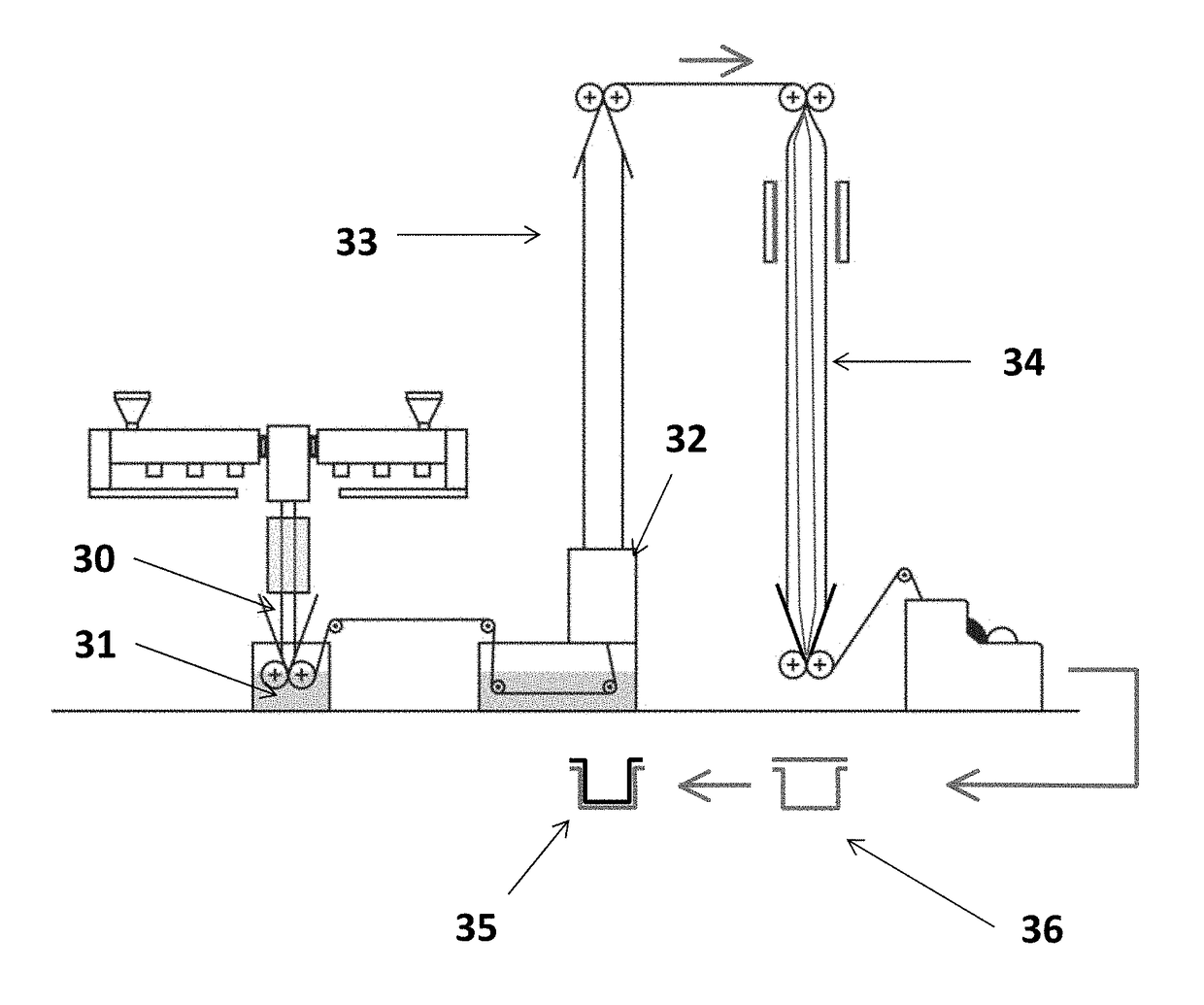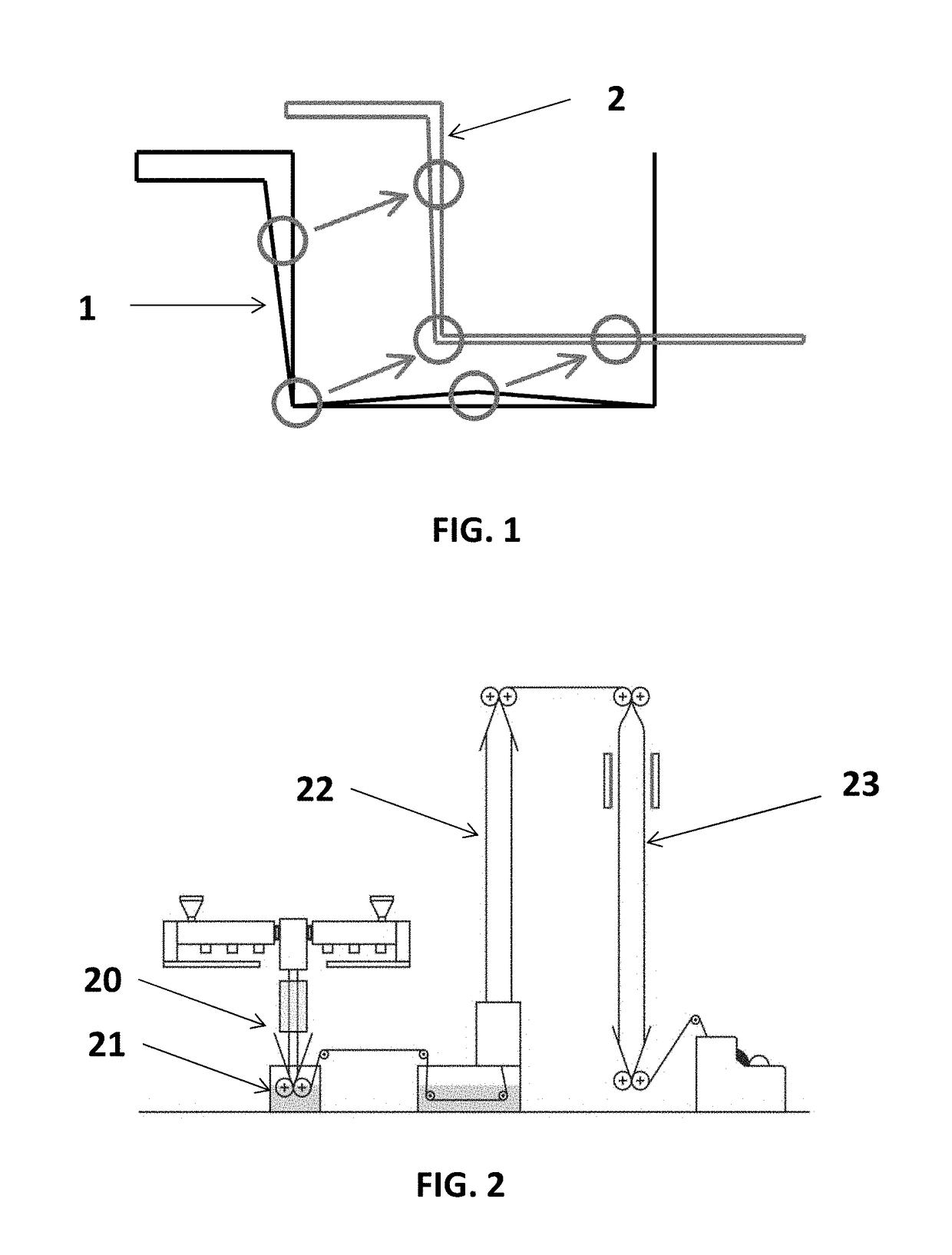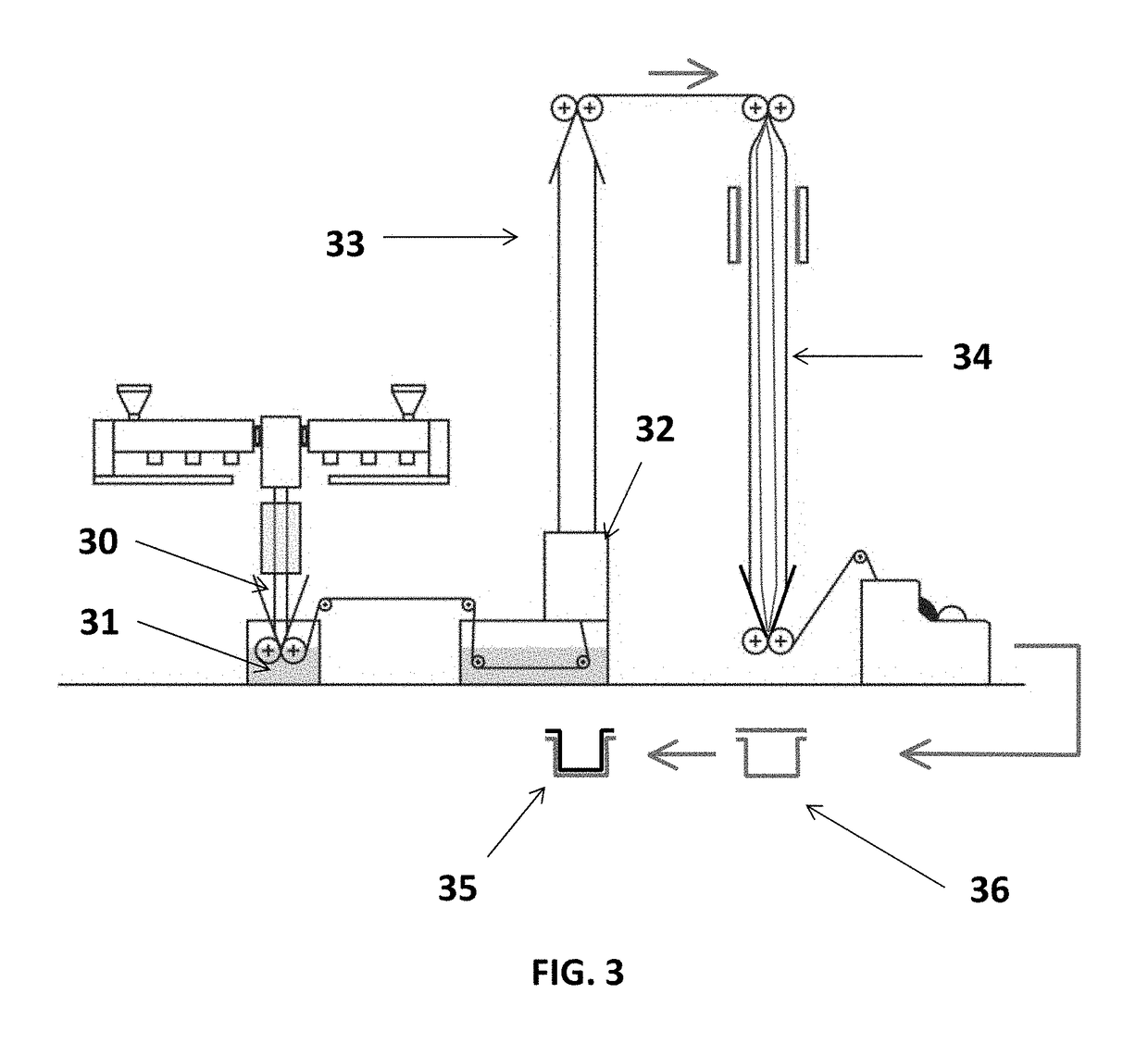Process of obtaining a double-oriented film, co-extruded, and of low thickness made by a three bubble process that at the time of being thermoformed provides a uniform thickness in the produced tray
a three-bomb process and double-oriented technology, applied in the field of plastics industry, can solve the problems of reducing the gas barrier capacity affecting the shelf life of packaged products, thinning of the corners and folds of the tray, etc., and achieves uniform thickness, reduce thickness, and prevent material buildup
- Summary
- Abstract
- Description
- Claims
- Application Information
AI Technical Summary
Benefits of technology
Problems solved by technology
Method used
Image
Examples
example 1
tion of the Dimension of the Film Obtained to Thermoform Two Trays
[0039]Assuming that there is a thermoforming device that the width and film requirement is 322 mm (32 cm) and has, as shown in FIG. 4:
[0040]At the top (40) 1 cm on each side and 2 cm at the center (41) for the sealing of the lid.
[0041]2 cavities to form two trays of 6 cm of depth (42) each.
[0042]Each tray has floor wide (43) of 14 cm.
[0043]Considering the above, the perimeter (sum of all its sides) or requested formed film, from 560 mm (56 cms). This will be the minimum dimension of the blowing in the second bubble of the present process. The third bubble, will be thermo-shrunk to the 322 mm required by thermoforming machine.
example 2
tion of the Film Dimension Obtained to Thermoforming a Tray
[0044]Assuming that the same machine from example 1, in which the center is removed (2 cms) to seal seeking a larger tray as a final product and with a depth (51) of 12 cm, sides (50) of 1 cm, and a bottom (50) of 30 cm, leaving the structure as shown in FIG. 5.
[0045]The perimeter or film requirement would be the same, 560 mm (56 cms), whereupon the film of the previous case will function without problem.
[0046]From the two previous examples can be considered:
[0047]In example 1, the ratio is 0.58 mil of film for every centimeter of depth.
[0048]In example 2, with the same film, it will apply 0.30 mil of film for every centimeter of depth.
[0049]In both examples the original thickness would be 3.5 mil instead of 6 mil for the first example and 12 mil for the second.
[0050]If a conventional film (1 mil / 1 cm), outside of 7 mil of thickness, when measuring the thickness of the package (tray) would be observed that from top to bottom...
example 3
n of the Thickness on Different Sides of the Thermoformed Tray from the Film of the Present Invention
[0053]A measurement of the thickness in different points of the thermoformed tray was made from the film of the present invention, where the film features 3.5 mil of an inch before being thermoformed versus existing in the market, which must have 7 mil of an inch of thickness prior to thermoforming in order to obtain the same dimension as the present invention, but it was observed a saving on material. In the same way in FIG. 6, there is illustrated the points of the thermoformed tray that were considered to make thickness measurements; such measurements are listed in the Table 2 below:
[0054]
TABLE 2Comparison of the results of the measurements of the thicknessbetween the present invention and film that currently exists.Type of filmConventionalLow film thicknessfilm(invention)Depth of the thermoformed tray7 ″cms″7 ″cm″Film thickness priorto the thermoforming7 ″mil″3.7 ″milEVALUATEDE11...
PUM
| Property | Measurement | Unit |
|---|---|---|
| temperature | aaaaa | aaaaa |
| temperature | aaaaa | aaaaa |
| thicknesses | aaaaa | aaaaa |
Abstract
Description
Claims
Application Information
 Login to View More
Login to View More - R&D
- Intellectual Property
- Life Sciences
- Materials
- Tech Scout
- Unparalleled Data Quality
- Higher Quality Content
- 60% Fewer Hallucinations
Browse by: Latest US Patents, China's latest patents, Technical Efficacy Thesaurus, Application Domain, Technology Topic, Popular Technical Reports.
© 2025 PatSnap. All rights reserved.Legal|Privacy policy|Modern Slavery Act Transparency Statement|Sitemap|About US| Contact US: help@patsnap.com



